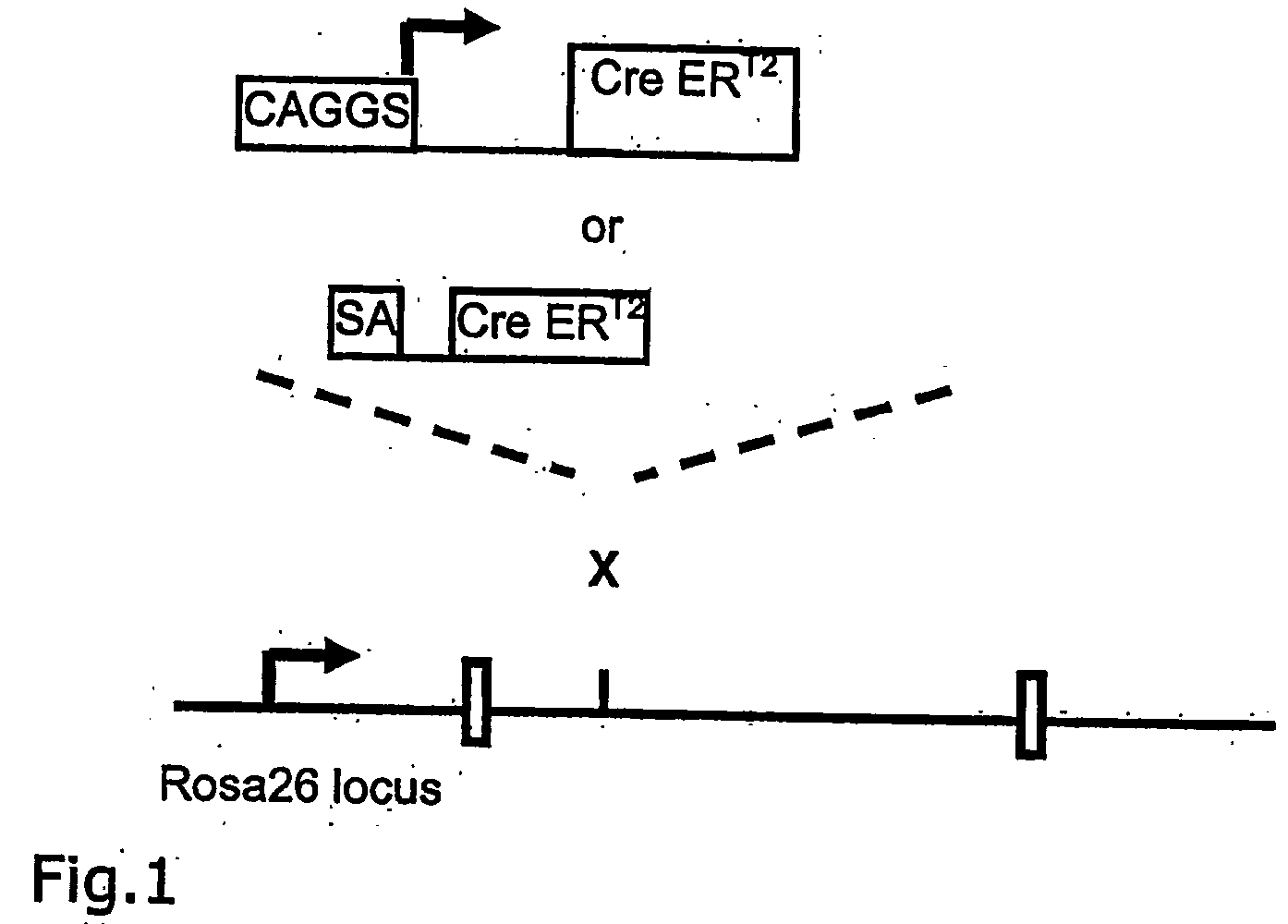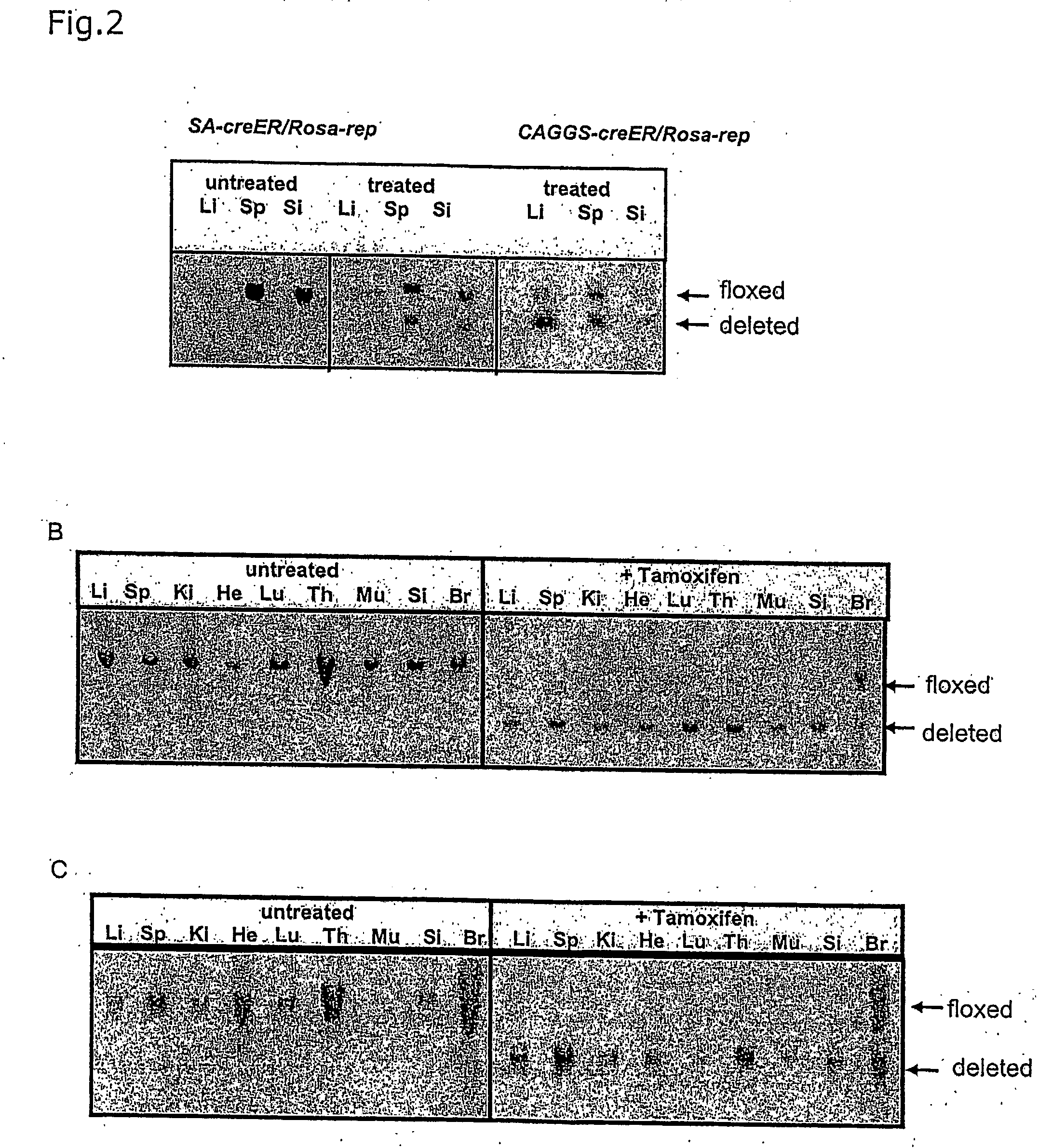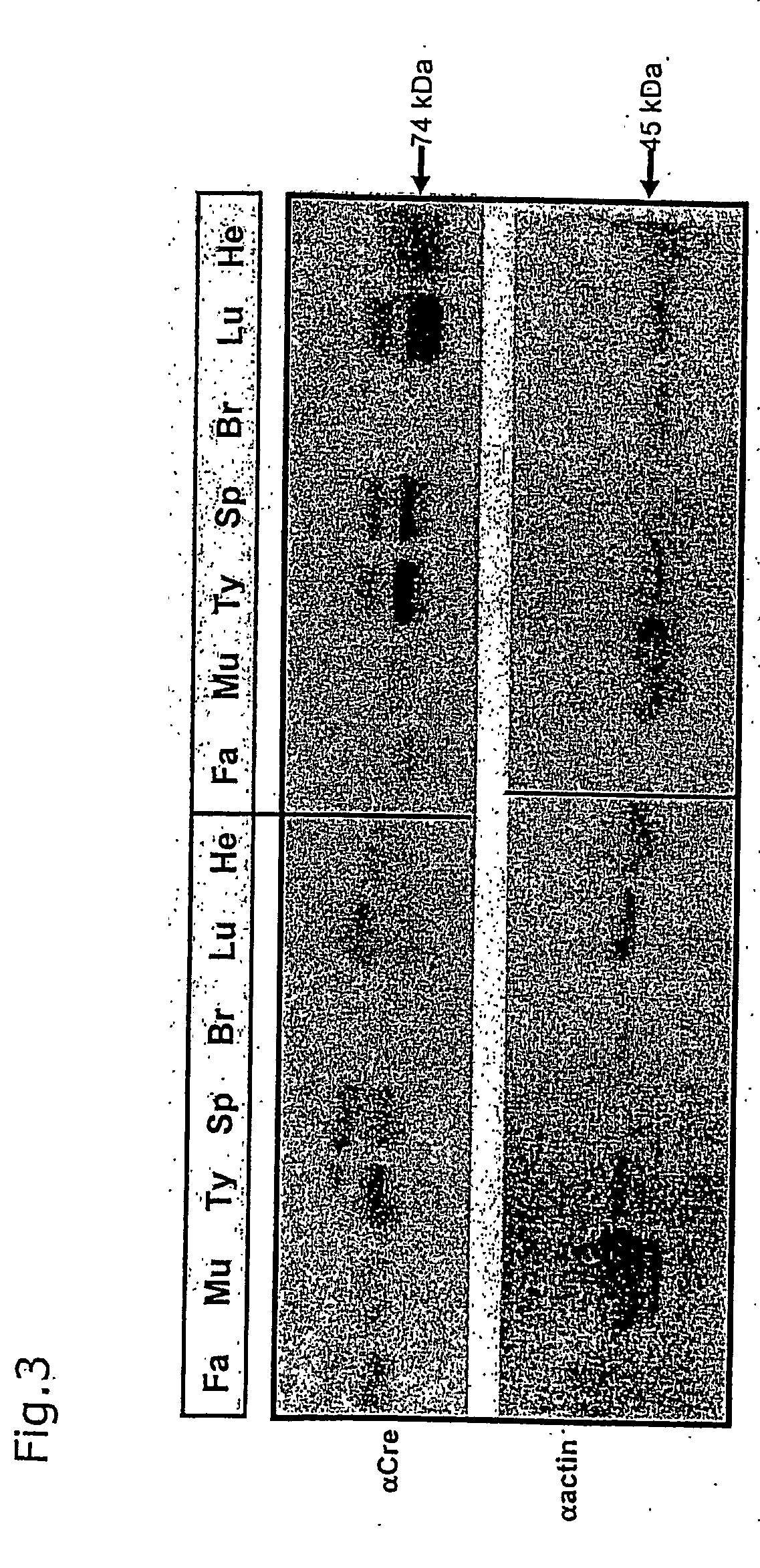Targeted transgenesis using the rosa26 locus
- Summary
- Abstract
- Description
- Claims
- Application Information
AI Technical Summary
Benefits of technology
Problems solved by technology
Method used
Image
Examples
example 1
[0052] A CreERT2 gene (Feil et al., (1997) Biochem Biophys Res Commun., 237, 752-757) under the control of the CAGGS-promoter (Okabe, Fabs Letters 407:313-19 (1997)) was inserted into the rosa26 locus by homologous recombination in ES cells by utilizing the CreER Rosa-targeting vector as described above (FIG. 1). In addition to the CreERT2 gene a splice acceptor sequence (Friedrich and Soziano (1991), Genes Dev., 9, 1513-1523) was introduced as a control for the endogenous activity of the rosa26 gene promoter (FIG. 1). A loxP-flanked hygromycin resistance gene was introduced into the second allele of rosa26 to provide test substrate for Cre ERT2 (Seibler et al., Nucl. Acids. Res. Feb. 15, 2003, 31(4):(12) (2003)), in press). ES cells modified at both rosa26 alleles were injected into tetraploid blastocysts and completely ES cell derived mice were generated (Eggan et al., (2001). PNAS, 98, 6209-6214). Rosa(SA-CreERT2 / reporter) and Rosa(CAGGS-CreERT2 / reporter) mice were fed with daily...
example 2
[0054] A Cre gene under the control of the Fabpl4× at −132-promoter (SEQ ID NO:8; FIG. 4) was inserted into the Rosa26 locus by homologous recombination in F1 ES cells carrying a Cre reporter substrate in the second Rosa26 allele. LacZ expression from the reporter construct (SEQ ID NO:9; FIG. 5) is activated upon Cre-mediated recombination. Targeted ES cells were injected into tetraploid blastocysts to generate FABP-Cre / reporter-substrate double transgenic ES mice. The Cre recombination pattern in these mice was examined by analyzing beta-galactosidase activity in tissues sections (FIG. 6). Cre-mediated recombination in these mice was restricted to the intestinal epithelium, liver and part of the cells in the epithelium of the tubuli in the kidney, thus exactly reflecting the expression pattern of the endogenous Fabpl gene (Simon et al., J. Biol. Chem., 272:10652-10663 (1997)).
PUM
 Login to View More
Login to View More Abstract
Description
Claims
Application Information
 Login to View More
Login to View More - R&D
- Intellectual Property
- Life Sciences
- Materials
- Tech Scout
- Unparalleled Data Quality
- Higher Quality Content
- 60% Fewer Hallucinations
Browse by: Latest US Patents, China's latest patents, Technical Efficacy Thesaurus, Application Domain, Technology Topic, Popular Technical Reports.
© 2025 PatSnap. All rights reserved.Legal|Privacy policy|Modern Slavery Act Transparency Statement|Sitemap|About US| Contact US: help@patsnap.com



